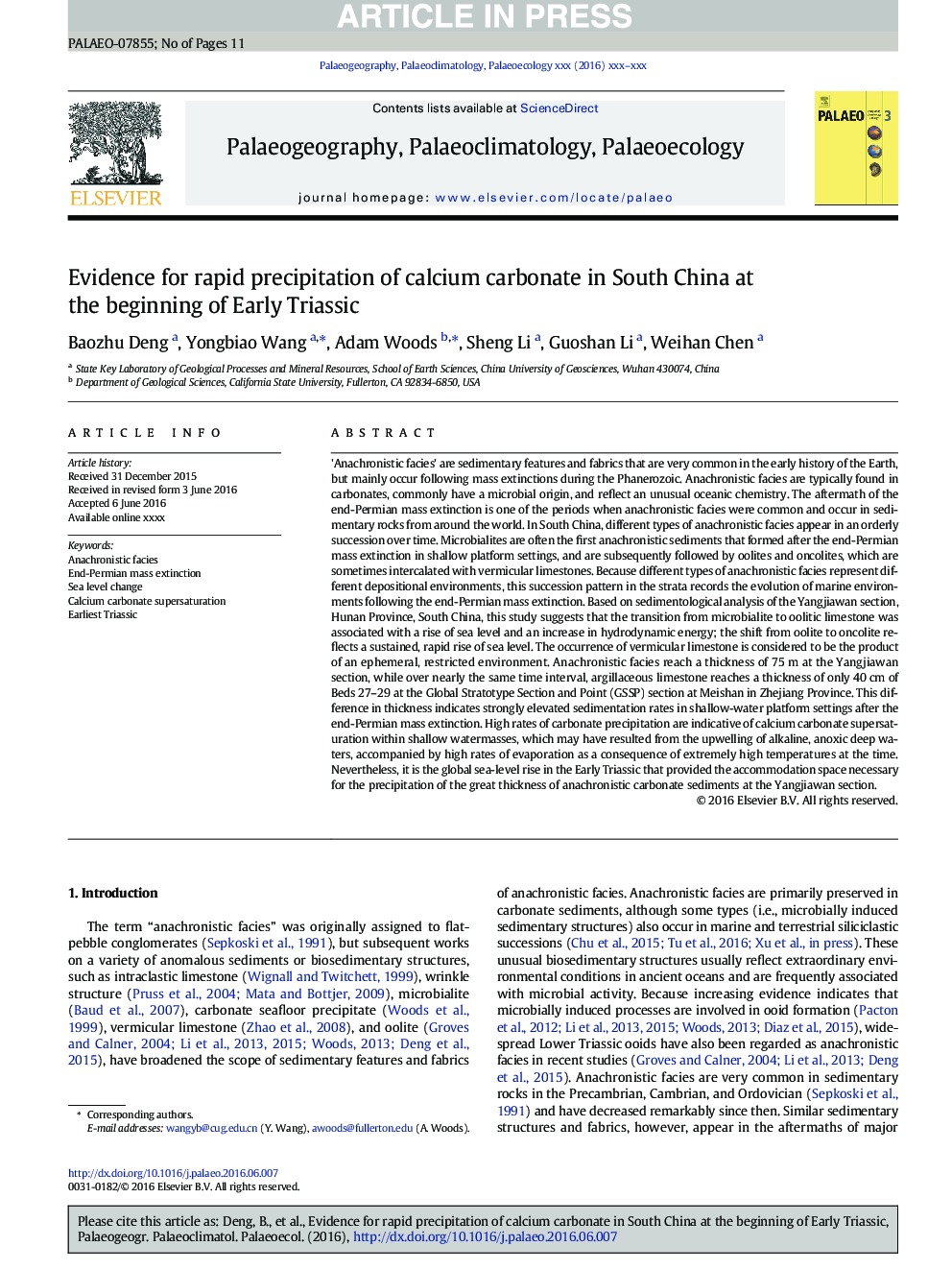| کد مقاله | کد نشریه | سال انتشار | مقاله انگلیسی | نسخه تمام متن |
|---|---|---|---|---|
| 5755962 | 1622118 | 2017 | 11 صفحه PDF | دانلود رایگان |
عنوان انگلیسی مقاله ISI
Evidence for rapid precipitation of calcium carbonate in South China at the beginning of Early Triassic
ترجمه فارسی عنوان
شواهد برای بارگیری سریع کربنات کلسیم در جنوب چین در ابتدای تریاس اولیه
دانلود مقاله + سفارش ترجمه
دانلود مقاله ISI انگلیسی
رایگان برای ایرانیان
کلمات کلیدی
رخساره های انحرافی، انقراض جمعی انتهای پرمین، تغییر سطح دریا، بیش از حد کربنات کلسیم، اولین تریاس،
موضوعات مرتبط
مهندسی و علوم پایه
علوم زمین و سیارات
فرآیندهای سطح زمین
چکیده انگلیسی
'Anachronistic facies' are sedimentary features and fabrics that are very common in the early history of the Earth, but mainly occur following mass extinctions during the Phanerozoic. Anachronistic facies are typically found in carbonates, commonly have a microbial origin, and reflect an unusual oceanic chemistry. The aftermath of the end-Permian mass extinction is one of the periods when anachronistic facies were common and occur in sedimentary rocks from around the world. In South China, different types of anachronistic facies appear in an orderly succession over time. Microbialites are often the first anachronistic sediments that formed after the end-Permian mass extinction in shallow platform settings, and are subsequently followed by oolites and oncolites, which are sometimes intercalated with vermicular limestones. Because different types of anachronistic facies represent different depositional environments, this succession pattern in the strata records the evolution of marine environments following the end-Permian mass extinction. Based on sedimentological analysis of the Yangjiawan section, Hunan Province, South China, this study suggests that the transition from microbialite to oolitic limestone was associated with a rise of sea level and an increase in hydrodynamic energy; the shift from oolite to oncolite reflects a sustained, rapid rise of sea level. The occurrence of vermicular limestone is considered to be the product of an ephemeral, restricted environment. Anachronistic facies reach a thickness of 75Â m at the Yangjiawan section, while over nearly the same time interval, argillaceous limestone reaches a thickness of only 40Â cm of Beds 27-29 at the Global Stratotype Section and Point (GSSP) section at Meishan in Zhejiang Province. This difference in thickness indicates strongly elevated sedimentation rates in shallow-water platform settings after the end-Permian mass extinction. High rates of carbonate precipitation are indicative of calcium carbonate supersaturation within shallow watermasses, which may have resulted from the upwelling of alkaline, anoxic deep waters, accompanied by high rates of evaporation as a consequence of extremely high temperatures at the time. Nevertheless, it is the global sea-level rise in the Early Triassic that provided the accommodation space necessary for the precipitation of the great thickness of anachronistic carbonate sediments at the Yangjiawan section.
ناشر
Database: Elsevier - ScienceDirect (ساینس دایرکت)
Journal: Palaeogeography, Palaeoclimatology, Palaeoecology - Volume 474, 15 May 2017, Pages 187-197
Journal: Palaeogeography, Palaeoclimatology, Palaeoecology - Volume 474, 15 May 2017, Pages 187-197
نویسندگان
Baozhu Deng, Yongbiao Wang, Adam Woods, Sheng Li, Guoshan Li, Weihan Chen,
